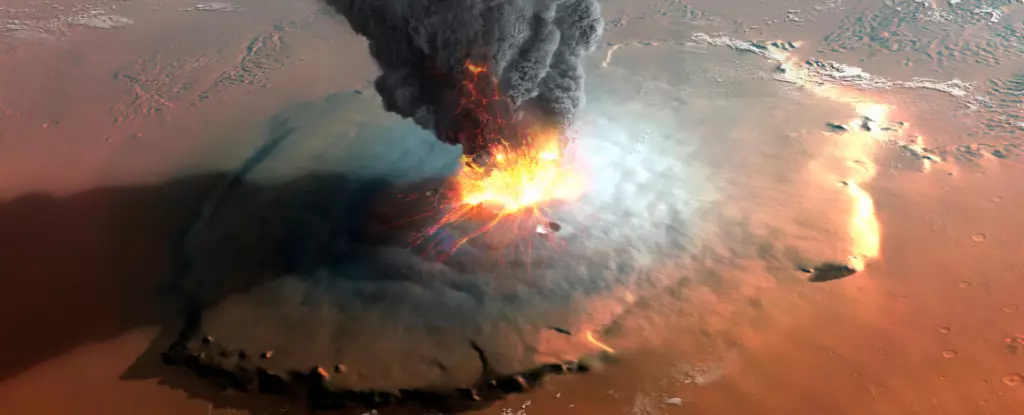Mars, often considered a quiet and dusty planet, has a violent history that could provide insights into Earth’s own past. Recent findings from a survey of the Martian surface suggest that the planet was once covered in volcanoes, similar to Earth before the formation of tectonic plates. Planetary scientist Joseph Michalski and his team from the University of Hong Kong examined the Eridania region in the southern hemisphere of Mars and identified evidence of extensive volcanic activity. This discovery sheds light on the geological conditions of early Mars and potentially offers clues about the formation of Earth’s crust.
A One-Plate Planet
Unlike Earth, which is composed of interlocking continental plates floating on its mantle, Mars is generally considered a one-plate planet. This means that it lacks the tectonic activity that enables Earth to release pressure through plate movement. As a result, Mars’ volcanoes were massive and explosive, with Olympus Mons being the largest shield volcano in the solar system, even larger in volume than Earth’s Mauna Loa in Hawaii. The absence of tectonic plates on Mars allows its geological history to remain relatively intact, providing valuable information about early crustal evolution.
Approximately 70 percent of Mars’ surface is over 3 billion years old, and about 45 percent is older than 3.6 billion years. Despite being heavily impacted by craters, Mars’ ancient geologic record remains largely intact, offering a unique window into early Solar System conditions. Michalski and his colleagues focused their study on the Eridania region due to its intensely magnetized crust and evidence suggesting the presence of an ancient Martian sea. Using remote sensing data from orbiters, the researchers identified four different types of volcanoes within and around the Eridania sea: volcanic domes, stratovolcanoes, pyroclastic shields, and caldera complexes. These volcanic structures, though similar to those found on Earth, exhibited slightly larger diameters due to Mars’ lower gravity and more explosive volcanism.
The Eridania region’s unique characteristics make it an intriguing area of study. The researchers noted that the diverse volcanism in the region is associated with felsic volcanic compositions not observed elsewhere on Mars. The topography of the ancient landscape also revealed fascinating features, including warped and folded crust sections and sagging basins. These observations led the researchers to theorize that Mars’ crust might have been slowly overturned by a precursor to plate tectonics known as vertical tectonics. This idea suggests that there may be hundreds more volcanoes in the Eridania region, possibly erupting beneath an ancient sea, drawing parallels to Earth’s Archean period when it was predominantly covered by water and life started to emerge.
Read More: The Future of Ethylene Production: A Breakthrough in CO2 Reduction
Implications and the Scale of Activity
The findings of this study have significant implications for understanding the geological history of both Mars and Earth. Mars’ preserved ancient crust provides valuable insights into the early evolution of Earth’s crust. By comparing the volcanic activity on Mars to that of Earth, scientists can gain a deeper understanding of the processes that shaped our planet. Furthermore, the vast scale of volcanic activity in the Eridania region is astonishing. The researchers speculate that there are likely many more undiscovered volcanoes, potentially erupting beneath an ancient sea. This paints a vivid picture of Mars’ violent and dynamic past, mirroring Earth’s own tumultuous geological history.
Mars’ turbulent volcanic past offers a glimpse into the early stages of planetary evolution. The absence of tectonic plates on Mars allowed for the formation of massive volcanoes, revealing a different pattern of geologic activity compared to Earth. The Eridania region, with its diverse volcanism and intriguing topography, presents a valuable puzzle piece in understanding the geological conditions of the early Solar System. By studying Mars, scientists can unravel the mysteries of our own planet’s history and gain insights into the formation of Earth’s crust.


Leave a Reply